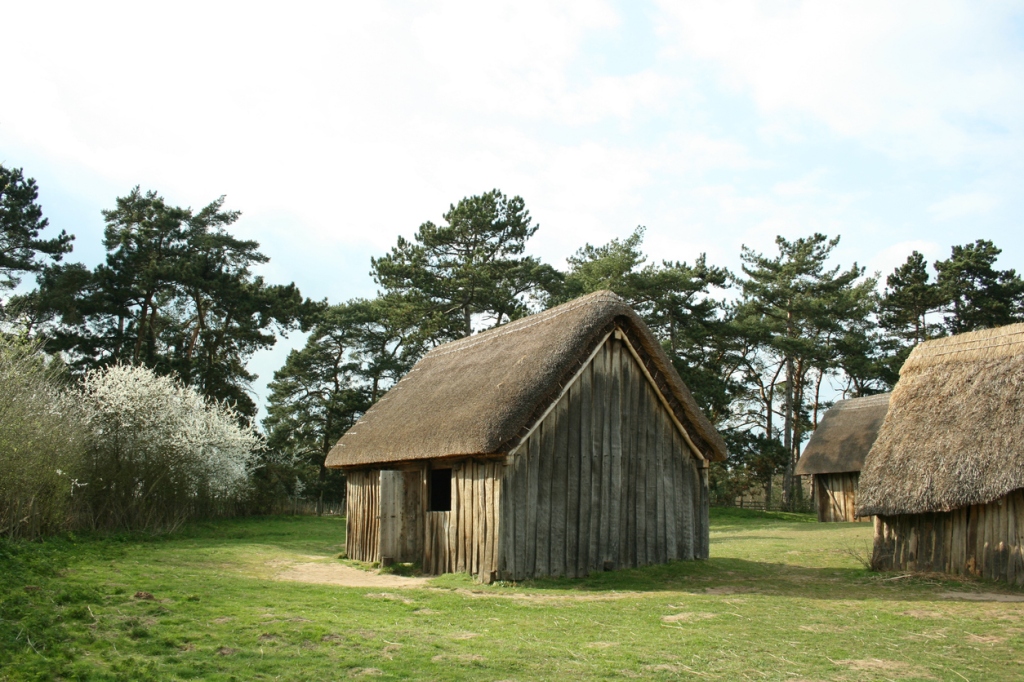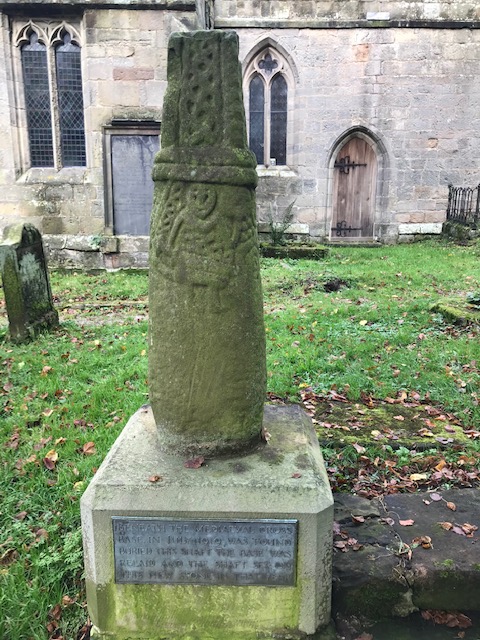What would an Anglo-Saxon village look like?

The Anglo-Saxon village or settlement consisted of wooden thatched huts, ceorls’ houses, and larger timber halls for the thegns, usually single storey and all grouped around a central mead hall and large chieftain’s hall. In many cases, these could be combined into one large ‘long hall’. The mead hall served as the venue for feasting with huge celebratory banquets, although generally restricted to the wealthy thegns and ealdormen, and as a place for meetings, sometimes referred to as ‘moot halls’ , the moot being the council meeting or gathering where the higher rungs of society met to discuss the settlement’s important matters of defence, judgement and punishment, tythes or food provisions. A large mead hall might contain rooms for the family of the chieftain (or cūning). As the period progressed halls became bigger and more splendidly furbished to signal the chieftain’s power and status. Recent archaeological work has uncovered huge halls for such purposes.
Even the early Anglo-Saxon villages would be fortified against raiders and would have a band of warriors ready to fight for their society’s protection and security. There would be stables for horses, granaries for storing precious grain, and along the dirt roads would be clusters of tradesmen’s workshops often with wooden shelves or counters outside, displaying their wares: the wood-worker, the metal-worker, the communal bakery, the baker, the weaver, the pottery kiln, and so on. When coinage was scarce, trade was often through exchange or barter of goods or services.
Thatched single-room huts of wattle and daub or wood comprised much of the settlement and these were often flanked by small plots allowed for vegetable growing for the family’s own use (the precursor of our gardens) and middens for human sewage – which proved invaluable for manure to fertilise the vegetable plot!
Gradually the Anglo-Saxons moved away from their pagan heritage and by the 6th century were embracing Christianity, partly through missionaries from Rome or Celtic lands, and simple timber churches could be found in settlements, often adopting pagan sites such as burial mounds, sacred wells or standing stones as their locations.
By the later period, the 9th to the 10th centuries, we might expect to see the wide development of village churches, still often timber built which didn’t survive the ages, but which later developed in size, architecture, building materials and adornments as the period continued. Many village churches of today bear evidence of their Saxon and Celtic origins, perhaps where they were built in stone (rare) or reveal a Saxon cross in the churchyard.
NEXT TIME: Anglo-Saxon diet and health …
For more about Anglo-Saxon life, my Anglo-Saxon/present day time-slip with mystery and a touch of romance can be found at:



Do you think their lives changed for better of worse after they embraced Christianity? Did they live differently, in terms of their everyday life?
Thank you for your question, Zy! The evidence indicates that early British Christianity and inherited (Roman, Celtic?) paganism ‘lived’ side by side for centuries before Christianity became the established ‘official’ religion in Britain. So I think changes happened slowly and gradually over time. Different sets of values, perhaps; better or worse? – well, that’s a matter of opinion and not really for me to judge! But thanks for your thoughts, Zy.
Ah, centuries — I didn’t know that. I wonder how much real choice the inhabitants had with regard to their conversion.